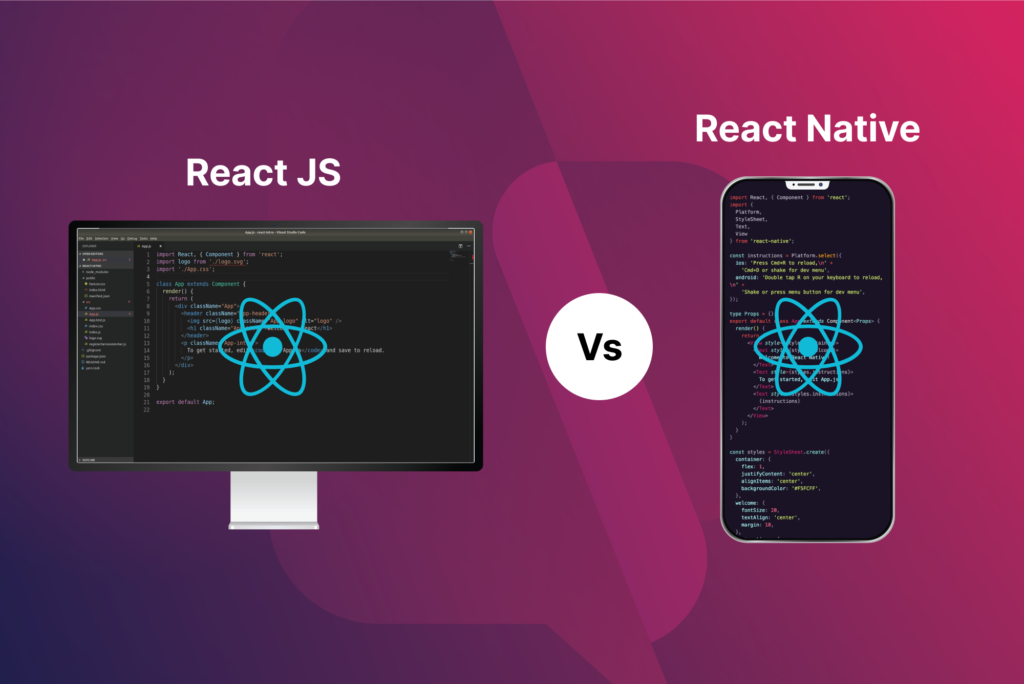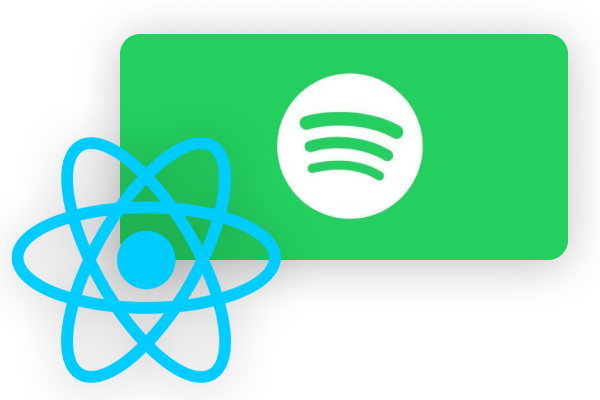React Native vs ReactJS: What and When to Use
Comparing React Native and React JS. How these technologies are similar and how they differ. In what cases is it used and whether it is possible to convert one to another.
React Native has been widely introduced by numerous businesses around the world. This includes Skype, Microsoft, Uber eating, and Fb commonly used in various industries. However, ever since you want to add React Native to your work or you choose to go with ReactJS, you must first understand the working criteria and determine whether it works well for your project or not.
Look at the main benefits and lacks of both React Native vs ReactJS. What distinguishes it from other cross-development systems? Finally, yet importantly, what do you need to tell your dev’s before stepping into React Native?

What is the usage of React Native and React JS?
React Native is a powerful JavaScript-oriented application development framework that will allow users to build native Mac and Android applications. The primary feature of this kind of framework is to build multiple applications from the same codebase.
ReactJS is an entirely accessible and open-sourced JavaScript library; it is much needed to develop web layouts for applications consisting of single-page. It supports the developers to control the view layer in single-page apps. Furthermore, you can use these already consisting UI elements for the development of other applications as well.
What is React JS?
Jordan Walke, an Fb software developer, launched the first application using React. At first, Facebook used ReactJS to build their news feeds feature, and then it worked the same for Instagram.
Coders can build huge web apps through React. There is no need to reload the page to refresh the page’s content. React’s primary goal is to be speedy, expandable, and accessible. It only tends to enhance the efficiency of the app’s interfaces. This is equivalent to the perspective, same as in the MVC template. However, you can add up other libraries or structures to make it more efficient.
What does React Native mean?

Facebook launched React Native as a free sourced project in 2015. It got a tremendous rise in mobile apps within a few years. The most popular apps made with React Native are Instagram, Facebook, Skype, etc. however, it is very effective to build a hybrid app using React Native without extra effort. Following in the guide, you’ll get all the required details about React Native apps development.
Key differences between React JS vs React Native
All ReactJS and React Native are essential factors in mobile and web app creation, and they are getting amazing traction with every passing day because of their flexible features and a changing environment of library services. As ReactJS is essentially a JavaScript library and React Native is a concise pathway, the former works as the latter’s core complement.
If ReactJS is perfect for creating and more efficient and performing complex apps, then React Native is an amazing factor for giving your mobile apps a native vibe. Let’s compare React JS vs React Native to get their key differences.
- ReactJS is a web based platform foundation variant of React DOM. In contrast, React Native is a dilutive base, which indicates that the coding and business process kept the same due to the element’s nature.
- Finally, the development team can use the JS library to design an interactive and efficient UI Surface. In contrast, React Native is a full solution for developing cross-platform web applications either iOS, or Android.
- In ReactJS, digital DOM represents browsing the program element, whereas, in React Native, native APIs work to describe its elements.
- ReactJS apps deliver HTML to its UI, whereas React Native utilizes JSX that will render the interface. In addition, it’s usually JavaScript.
- In ReactJS, we need CSS to build styling, whereas in React Native, a stylesheet is needed to add styling.
- You can perform animations through CSS in Applications based on ReactJS. However, an interactive API is required throughout various React Native applications.
- ReactJSis an amazing alternative for creating a robust, dynamic, and receptive UI for web UI. In contrast, React Native is a great alternative for giving mobile applications a truly native vibe.
Similarities between React Native and ReactJS
As we have many dissimilarities between ReactJS and React Native, a few of the similarities also exist. People generally agree that the main thing that is common in both is a lack of information on both. Conversely, since the launch of React 16, there has been excellent information online on its official website.
React Native uses ReactJS as a core library when using React Native for cross-platform applications. It only needs a basic understanding of JS and the coding style of React.

In the React Native framework, you could use most development tools devoted entirely to ReactJS, such as Chrome Dev Tools for exhibiting console logs and examining network requests or Redux DevTools to investigate the redux store’s condition.
Both ReactJS and React Native are excellent for rapid and challenging UI development, and switching from React Native to ReactJS is basic for the developers who appreciate trying out new JavaScript frameworks.
React JS Application Examples
Spotify
Spotify is a well responsive design web app created with ReactJS, Tailwind, Chart.JS, Node, Express, and the Spotify API that provides personalized data based on your Spotify account.

Builder’s book
Builder’s book is a complete app that was built by using ReactJS. It developed a unique user interface with a practical library of ReactJS.
Netflix
Netflix is yet another famous ReactJS web application project. Netflix is a primary leading online video streaming system that provides movies, web series, TV shows, documentary films, and other content. Everyone enjoys watching high-quality videos, and scaling large applications is a crucial feature of ReactJs.
React Native Application Examples
Moving an existing app to new technology is undoubtedly tricky. This is because the Instagram app has an easier user interface; it makes it an effective source of technological innovation. The leading quality of this application is that you can easily maintain cross-platforms.

Discovery VR
Discovery VR carries huge productivity to the application via VR. The app also features unique content from various shows. Its amazing user interface lets its users work in a seamless virtual environment.
Skype
Skype is a VoIP system that uses video chat as its primary mode of communication. Not only that, but Skype allows you to build and obtain voice calls as well as instant messages. When Microsoft first used React Native in 2017, user management made several positive improvements ranging from icons to a total layout overhaul.
How to convert ReactJS to React Native?
You can easily convert ReactJS to React Native. React Native outperforms React for app setup with simplicity. A single effectively lead folder containing your complete Xcode and Android configuration, as well as a starter app prepared for use with the console.
After it runs within the controller of the ReactJS mobile app, make an ‘src’ directory to store all of the code. Then, enable live recharge (on iOS, command + D opens the dev menu, on Android, control + D) and start developing!
A small note regarding React-style apps: Returning your view from your.JS files can feel odd if you’re new to this.
In its most basic form, React is a framework for writing modular, dynamic content. Wherever possible, each element is subdivided into sub-processes. Each component is embodied as an element or class in its document that allows users to import only what they need. The function then returns its perspective, which is content to display.
Navigation and Menu
If you do have a web menu and modify its destination for application development. Further, you may want to access the menu by swiping or clicking. We have a surprisingly huge amount of React Native libraries available to lie on the majority of mobile application required criteria.
React-Native-side-menu is a unique little library that’s very simple to startup. Swiping is evaluated to ensure it was sleek before connecting links to the side menu.
As React Native does not include a default navigation system, “React-Native-router-flux” is added to build a navigation system. It operates perfectly even if you don’t have an experience of typical flux (the flux was comparable to Redux in concept) state management solution, and it’s easy to initiate its startup.

In this way, you will get a personalized view to evaluate how the navigation works through a concise clip. The title appears in the utmost header. You can easily navigate to a particular post through this code. This is basically the actual JS file that contains the Native elements to be displayed on the corresponding page. Resultantly, you’ll get a template for each page.
As many people state that there is no steady or quick way to convert ReactJS to React Native, still we have multiple ways to do so. You’re given a simple method to use a web application’s features as a mobile app. It wouldn’t take a lot of your time.
You can utilize Cordova to perform the following task within a few minutes. It would be great to follow the steps mentioned above to convert a ReactJS mobile app to React Native. Read the full guide here
Conclusion
React Native and ReactJS are considered essential sources for application development. ReactJS is suitable for building efficient apps and performing tricky operations, and then React Native is optimal for your mobile app’s native vibe.
Each technology or structure in the software industry has some weaknesses, and ReactJS and React Native are no exception. Consequently, it is amazing to track the characteristics of these technologies before any expected outcomes.

Subscribe to us










